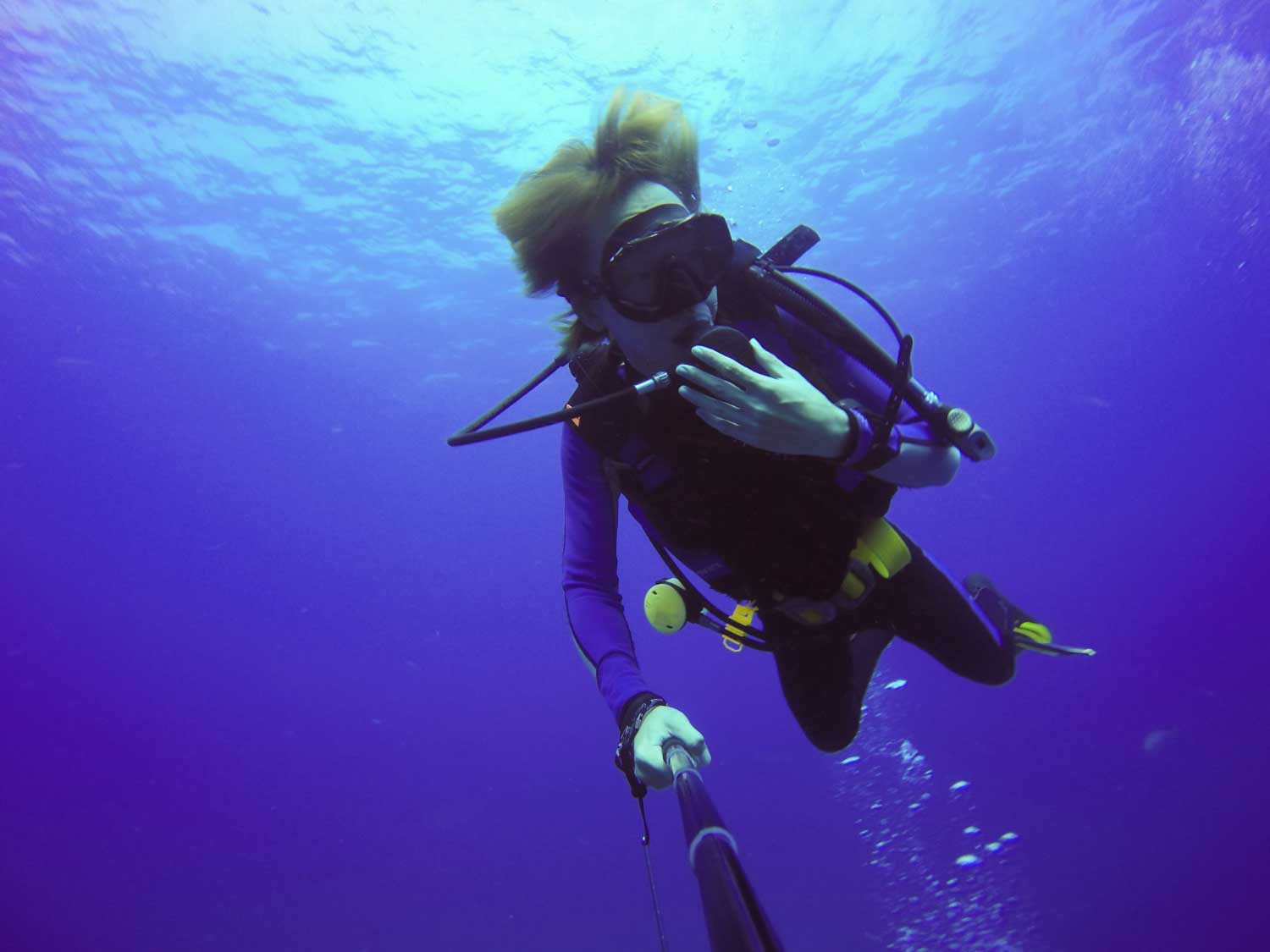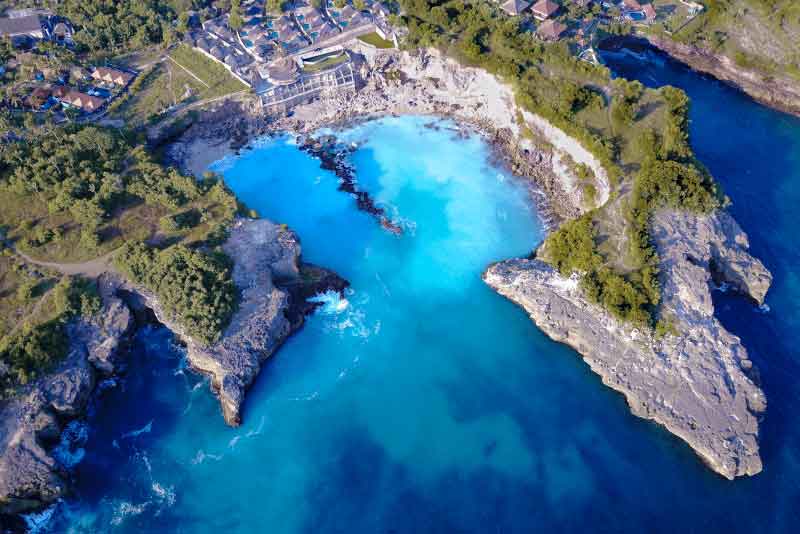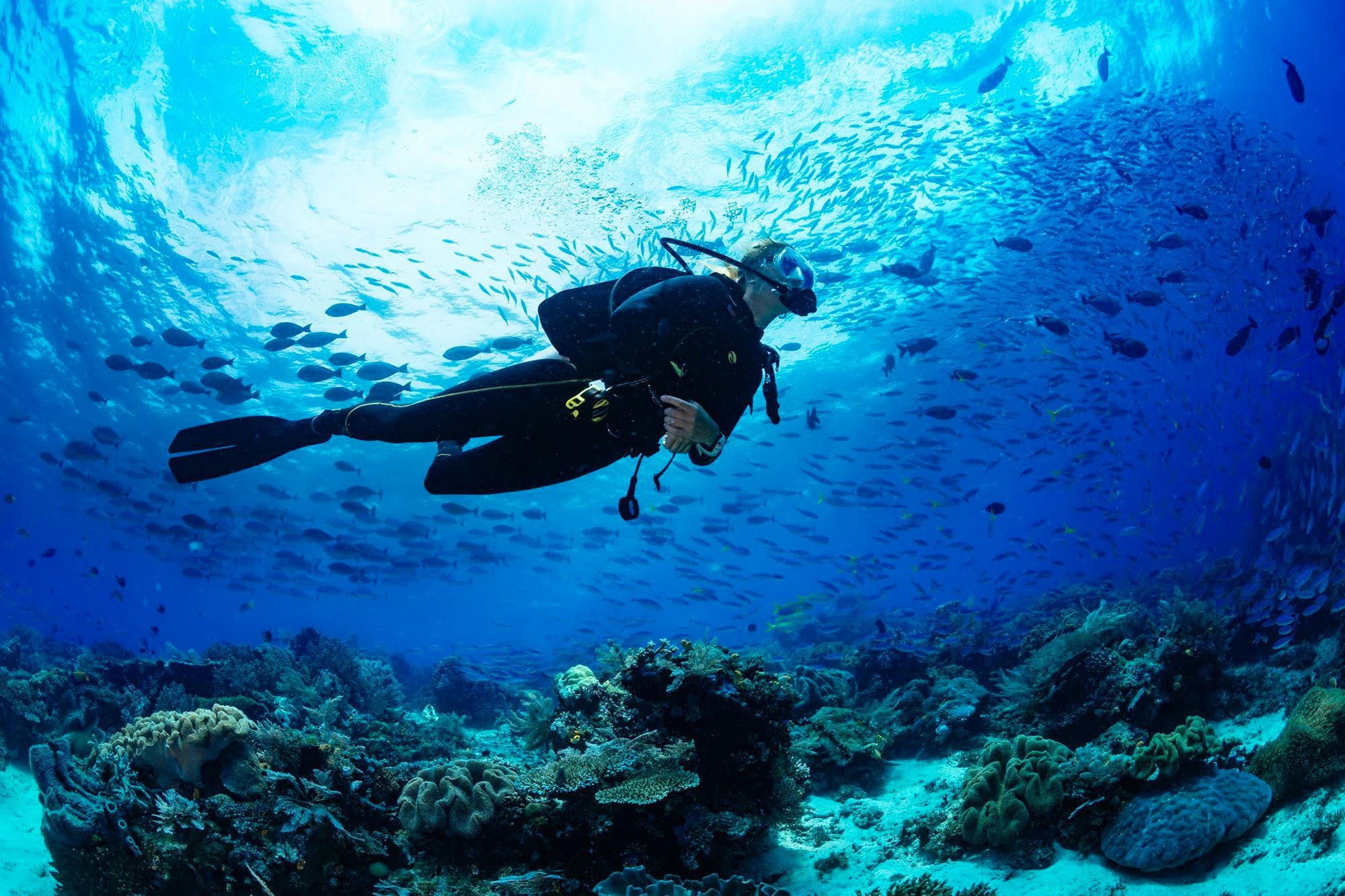The Best Tropical Diving Destinations:
Where Should You Actually Go?
I’ve been thinking about this question a lot lately—probably because I keep getting messages from friends asking where they should dive next. And honestly? It’s not a simple answer. Everyone’s looking for something different underwater, and what blows my mind might not be what gets you excited. But I’ll try to break down some of the world’s best diving spots based on what I’ve learned, experienced, and honestly just pieced together from countless conversations with other divers and diving specialists.
The thing is, choosing a diving destination isn’t just about the fish count or visibility. It’s about the whole experience—the journey there, what you do between dives, whether you’re comfortable with strong currents or prefer calm waters, and yeah, your budget. That last part matters more than most people admit upfront. I’ve spent hours comparing destinations, reading through resources from dive operators and specialists companies like Original Diving that focus on specific regions really know their stuff, and trying to figure out what actually makes sense for different types of divers.
What Makes a Diving Destination Actually Great?
Before we dive into specific places (pun completely intended), let me share what I think separates good diving from truly unforgettable diving. You need at least a few of these elements, though having all of them? That’s rare.
Marine biodiversity is the obvious one. More species, more excitement. But it’s not just about quantity—it’s about the quality of encounters. Swimming alongside a single whale shark beats seeing a hundred damselfish any day, in my opinion.
Visibility matters more than I initially thought it would. My first dive in murky water taught me that real quick. There’s something deflating about knowing there’s probably amazing stuff around you, but you can’t see it past 5 meters.
Accessibility includes everything from flight connections to whether you need a liveaboard or can dive from shore. This affects both your budget and how much energy you spend just getting to the dive sites.
Seasonal consistency is underrated. Some places are incredible six months of the year and mediocre the other six. Others deliver year-round, which gives you more flexibility in planning.

The Maldives: The Obvious Choice (But Is It Right for You?)
Let me start with the Maldives because it’s probably what popped into your head when you saw this article’s title. The Maldives has this reputation—luxury, pristine waters, Instagram-worthy overwater villas. And yeah, all of that’s true. But the diving? That’s where things get interesting.
The Maldives sits on a massive underwater mountain range creating channels, walls, and reefs that attract serious marine life. We’re talking manta rays at Hanifaru Bay (during the right season), whale sharks in South Ari Atoll, and pelagic action that can include multiple shark species. The water temperature hovers around 27-30°C year-round, which is comfortable enough that you won’t need more than a 3mm wetsuit.
But here’s the thing about the Maldives—it’s developed into two very different experiences. You’ve got the luxury resort islands where diving is just one amenity among many, and then you’ve got the local island guesthouses that opened up for tourism more recently. The diving itself can be fantastic from either option, but the price difference is staggering. Resort diving might run you $100-150 per dive, while guesthouse-based diving can drop that to $50-70.
The currents in the Maldives can be intense, particularly in the channels where the big action happens. I remember my first drift dive through a channel—exhilarating but also slightly terrifying if I’m being honest. You need to be comfortable with current diving and have good buoyancy control. This isn’t really beginner territory, despite what some resort marketing might suggest.
Visibility is generally excellent during the dry season (November-April), often exceeding 25-30 meters. The wet season (May-November) brings reduced visibility but also the best chance for manta ray and whale shark encounters because the plankton blooms attract them. So there’s a trade-off there that you need to think about.
If you’re looking for big pelagics and don’t mind spending more, the Maldives delivers. But if macro photography or wreck diving is your thing, you might find it a bit lacking compared to other destinations. The strength here is really the sharks, rays, and that feeling of diving in what looks like a massive aquarium.

Galapagos and Cocos: The Bucket List Pelagic Experience
Let me group these together because they offer similar experiences—big animals, challenging conditions, and serious price tags. These are advanced-diving-only destinations that require liveaboard access and come with high expectations.
The Galapagos delivers on hammerhead encounters like nowhere else. Darwin and Wolf Islands host massive schools—we’re talking hundreds of scalloped hammerheads cruising in the blue. You’ll also see Galapagos sharks, silky sharks, whale sharks seasonally, eagle rays, and occasionally orcas or dolphins. The marine iguanas are a bonus unique to Galapagos.
Cocos Island off Costa Rica is often rated as the world’s best destination for hammerhead encounters. Similar massive schools, plus white-tip sharks, eagle rays, and incredible biodiversity. The currents are strong, visibility can be variable, and you need to be comfortable with blue-water reef hooking situations.
Both destinations require serious diving experience—typically Advanced Open Water minimum and a decent number of logged dives. The liveaboard costs run $4,000-6,000 or more for a week, not including flights to get there. But for divers specifically chasing big animal encounters, particularly hammerheads cruising in schools, these destinations deliver consistently.
If hammerhead diving specifically is on your radar, there are resources dedicated entirely to finding the best locations globally and understanding their migration patterns and seasonal variations. It’s specialized knowledge that helps time your trips perfectly.

The Philippines: Diversity on a Budget
Now the Philippines—this is where I always get excited talking about diving. Not because it’s “better” than the Maldives (that’s not really a fair comparison), but because it offers such incredible variety at prices that won’t destroy your savings account.
The Philippines has over 7,600 islands, which translates to thousands of dive sites ranging from shallow coral gardens perfect for beginners to technical wreck penetrations that’ll challenge the most experienced divers. And perhaps more importantly, you can dive year-round somewhere in the archipelago. When one region gets hit with rougher weather, another region is calm and clear.
Let me break down some of the standout areas, because just saying “the Philippines” doesn’t really capture the diversity here.
Anilao is often called the birthplace of Philippine diving, and it’s become legendary for macro life. We’re talking nudibranchs—hundreds of species—along with ghost pipefish, seahorses, frogfish, and bizarre critters you’ve probably never heard of. It’s muck diving heaven. The viz isn’t always spectacular, maybe 10-20 meters on a good day, but that’s not why you’re here. You’re here to find that tiny pygmy seahorse or a rare species of nudibranch that’ll make your dive buddy jealous.
Malapascua gives you something completely different—thresher sharks. Every morning, these sharks come up from the deep to cleaning stations around Monad Shoal, and you can dive there at dawn to watch them. It’s one of the most reliable pelagic encounters in Southeast Asia, and honestly one of the coolest dives I’ve heard about. The island itself is small and laid-back, which adds to the charm.
Tubbataha is the Philippines’ crown jewel for experienced divers, though it’s only accessible via liveaboard during a narrow window (March-June). UNESCO World Heritage status, pristine reefs, sharks, rays, turtles—basically everything you want from a bucket-list dive destination. It’s not cheap (liveaboard costs add up), but it’s spectacular.
Moalboal has that incredible sardine run—a bait ball of millions of sardines that you can swim through. It’s surreal and available right from the shore. Plus Pescador Island nearby offers walls, caves, and usually some bigger fish action.
What makes the Philippines particularly appealing is the cost. Diving runs around $25-40 per dive in most places, accommodation ranges from basic fan rooms at $15/night to nice resorts at $80-100, and food is cheap and good. You can do a serious two-week diving trip for what you’d spend on four days at a Maldives resort.
For anyone planning a comprehensive trip covering multiple regions, there’s detailed information about getting around, costs, and logistics that I’ve found really helpful. The connectivity between islands has improved significantly in recent years, making island-hopping more feasible than it used to be.
Indonesia: The Gold Standard for Serious Divers
Indonesia probably deserves its own article, but I can’t talk about top diving destinations without mentioning it. This is where you go when you want to see absolutely everything—from the smallest critters to massive mantas and everything in between.
Raja Ampat tops most experienced divers’ bucket lists, and with good reason. The marine biodiversity here is unmatched—scientists have recorded over 1,500 species of fish and 600 species of coral. The coral coverage is the healthiest I’ve seen in photos, though I’ll admit I haven’t made it there personally yet. It’s remote, which means liveaboard or dedicated dive resort stays, and prices reflect that remoteness. But people who’ve been there say it’s worth every penny.
Komodo offers not just the famous dragons topside but incredible underwater topography with strong currents that bring in the nutrients. Manta rays are common at certain sites, and the coral gardens are stunning. You’ll see more experienced divers here because the currents can be challenging.
Bali gives you variety within easy reach—the Liberty wreck at Tulamben (accessible right from shore!), mola mola (sunfish) seasonally at Nusa Penida, and muck diving at various sites. It’s more developed tourism-wise, which means easier logistics but potentially more crowds at popular sites.
The Indonesia diving season varies by location, but generally the dry season (April-November) offers the best visibility and conditions across most regions. Water temperatures sit around 26-29°C, so a 3-5mm wetsuit works fine depending on how cold-sensitive you are.

Red Sea: The Convenient Alternative
The Red Sea doesn’t get enough credit, in my opinion. Egypt’s section in particular offers incredible diving that’s relatively easy to reach from Europe and reasonably priced once you’re there.
The visibility in the Red Sea is consistently excellent—often 25-40 meters—and the water is warm year-round. The coral reefs here are famous for their vibrant colors and excellent health compared to many other regions. You’ll see reef sharks, napoleonfish, huge schools of barracuda, and dolphins are common.
What I like about the Red Sea is the shore diving accessibility. Many sites can be accessed directly from the beach, which keeps costs down and gives you flexibility. Liveaboards are still popular for reaching the more remote sites in the south, but you’re not locked into that option.
The wreck diving deserves special mention—the Thistlegorm is one of the world’s most famous wreck dives, and there are dozens of other wrecks at various depths and penetration levels. If you’re into wreck diving, this is a top-tier destination.
French Polynesia: The Shark Capital
French Polynesia, particularly Rangiroa and Fakarava, has earned its reputation as a shark diving paradise. Rangiroa’s Tiputa Pass can have hundreds of grey reef sharks in one dive, plus dolphins that sometimes join the action. The atoll’s geography creates incredible drift dives through channels where the current brings all the nutrients and attracts the big players.
Fakarava is a UNESCO Biosphere Reserve with some of the most pristine reef systems remaining in the Pacific. The south pass hosts enormous grouper spawning aggregations seasonally, which in turn attracts massive numbers of sharks—700+ on a single dive isn’t unheard of during peak season.
The downside? French Polynesia is expensive. Flights from most places require multiple connections, accommodation isn’t cheap, and diving costs are on the higher end. But the shark action is unmatched if that’s your primary goal.

How to Actually Choose
Here’s my honest take on picking between these destinations—start by asking yourself a few questions:
What’s your experience level? Be honest. If you’ve got 20 dives logged and no current experience, skip Galapagos and Cocos. Look at the Philippines or the Red Sea instead. The Maldives can work but choose your sites carefully.
What’s your budget? This matters more than anything. You can do incredible diving on $1,500 total in the Philippines or spend that per day in the Maldives. Both can be amazing experiences, but they’re completely different trips.
What do you want to see? Tiny critters and macro life? Philippines or Indonesia. Big animals and pelagics? Maldives, Galapagos, or Cocos. Sharks specifically? French Polynesia or dive into specialized resources about different species. Healthy coral reefs? Indonesia or the Red Sea.
Are you traveling solo or with non-divers? Some destinations work better for groups with mixed interests. The Maldives and Bali have plenty to offer non-divers, while Cocos Island on a liveaboard is pretty much divers-only.
What season can you travel? This might decide for you. If you can only travel in June, that eliminates some options and highlights others.
Perhaps the more useful question is: what would disappoint you? Would you be upset if you didn’t see whale sharks? Would strong currents stress you out? Would basic accommodation bother you? Start eliminating destinations based on your dealbreakers rather than trying to find the “best” one.
The Bottom Line (If There Is One)
There isn’t a single “best” diving destination—there’s the best one for you right now. Maybe that’s the Philippines because you want variety without emptying your bank account. Maybe it’s the Maldives because you’re celebrating something special and want the luxury experience. Maybe it’s Cocos because you’ve been diving for 15 years and you’re finally ready for those hammerhead schools.
What I’ve learned is that the “perfect” dive trip usually comes down to matching expectations with reality. If you go to the Philippines expecting Maldives-style pristine visibility and luxury, you’ll be disappointed. If you go to the Maldives expecting Philippines-style macro life and wreck diving, same problem.
Research the specific sites within each destination, understand the seasonal variations, be realistic about your skill level, and honest about your budget. The diving world has incredible experiences at every price point and skill level—you just need to match yourself with the right destination at the right time.
And maybe that’s the real answer. Don’t stress about finding the absolute best place. Find the best place for this trip, this budget, this timeframe. There will be other trips, other destinations, other experiences. The ocean isn’t going anywhere (hopefully), and there’s always another dive site waiting.

